Housing Principles
Housing Principles
Built for Zero
S3 is a member of the Built for Zero movement, an internationally recognized model for systematically addressing homelessness to achieve functional zero.
The movement is made up of more than 100 cities and counties that have committed to measurably ending homelessness for entire populations. Using data, these communities have changed how local homeless response systems work and the impact they can achieve.
The goal is to achieve a milestone known as functional zero — an ongoing state where homelessness is continuously rare and brief. Together, cities everywhere are proving that we can build a future where homelessness is rare overall and brief when it occurs.
Built for Zero
Built for Zero
S3 is a member of the Built for Zero movement, an internationally recognized model for systematically addressing homelessness to achieve functional zero.
The movement is made up of more than 100 cities and counties that have committed to measurably ending homelessness for entire populations. Using data, these communities have changed how local homeless response systems work and the impact they can achieve.
The goal is to achieve a milestone known as functional zero — an ongoing state where homelessness is continuously rare and brief. Together, cities everywhere are proving that we can build a future where homelessness is rare overall and brief when it occurs.
built for zero
Housing Continuum
The severity of issues and needs that homeless individuals and families present with create a situation that requires collective intention, creative solutions, collaborative will, and long-term commitment. Additionally, Santa Fe struggles with the overall lack of accessible, affordable housing options, and insufficient capacity to provide necessary supportive services for individuals in need.
To effectively address the issue of homelessness, it is important to understand the continuum of housing options and supportive services that are required for an optimal response to ending homelessness.
The diagram below illustrates the various structural system components necessary, in sufficient proportion, to adequately respond to the needs of the homeless population, as well as individuals/families at imminent risk of homelessness.

Interim Solutions & Funding Plan
Housing Continuum
The severity of issues and needs that homeless individuals and families present with create a situation that requires collective intention, creative solutions, collaborative will, and long-term commitment. Additionally, Santa Fe struggles with the overall lack of accessible, affordable housing options, and insufficient capacity to provide necessary supportive services for individuals in need.
To effectively address the issue of homelessness, it is important to understand the continuum of housing options and supportive services that are required for an optimal response to ending homelessness.
Equity and Understanding of Homelessness
S3 Santa Fe Housing Initiative views housing as a basic human right and the foundation of a healthy, vibrant experience for all community members. As stated by the National Alliance to End Homelessness, “The disproportionality in homelessness is a by-product of systemic inequity. The lingering effects of racism continue to perpetuate disparities in critical areas that impact rates of homelessness. Poverty, and particularly deep poverty, is a strong predictor of homelessness.”
S3 Santa Fe Housing Initiative is committed to looking at system inequities as we work to remedy homelessness and housing instability within the Santa Fe area.
We believe that access to safe, permanent and affordable housing is a key social determinant of individual and community health.
Our work is based upon the following understandings specific to homeless and precariously housed individuals and families in the Santa Fe area.
- People of color and other vulnerable populations, including Native Americans and LGBTQ, are significantly overrepresented among homeless and unstably housed individuals and families.
- High rates of homeless households have histories or current involvement with child or adult protective services, as well as juvenile and adult corrections systems.
- High rates of homeless individuals and families are either fleeing domestic violence or have histories of domestic violence.
- Among chronically homeless individuals, significant rates of mental illness and co-occurring substance misuse exist.
- Undiagnosed and/or untreated trauma is both preexistent among homeless individuals and is further compounded by the sheer experiences of homelessness.
The Time For Healing Is Now.
Equity and Understanding of Homelessness
S3 Santa Fe Housing Initiative views housing as a basic human right and the foundation of a healthy, vibrant experience for all community members. As stated by the National Alliance to End Homelessness, “The disproportionality in homelessness is a by-product of systemic inequity. The lingering effects of racism continue to perpetuate disparities in critical areas that impact rates of homelessness. Poverty, and particularly deep poverty, is a strong predictor of homelessness.”
S3 Santa Fe Housing Initiative is committed to looking at system inequities as we work to remedy homelessness and housing instability within the Santa Fe area.
We believe that access to safe, permanent and affordable housing is a key social determinant of individual and community health.
Our work is based upon the following understandings specific to homeless and precariously housed individuals and families in the Santa Fe area.
- People of color and other vulnerable populations, including Native Americans and LGBTQ, are significantly overrepresented among homeless and unstably housed individuals and families.
- High rates of homeless households have histories or current involvement with child or adult protective services, as well as juvenile and adult corrections systems.
- High rates of homeless individuals and families are either fleeing domestic violence or have histories of domestic violence.
- Among chronically homeless individuals, significant rates of mental illness and co-occurring substance misuse exist.
- Undiagnosed and/or untreated trauma is both preexistent among homeless individuals and is further compounded by the sheer experiences of homelessness.
The time for healing is now.
Residents’ Bill of Rights for a Healthy Santa Fe
Residents’ Bill of Rights for a Healthy Santa Fe

Affordability:

Quality, Sustainability and Health:
Quality, Sustainability and Health:


Accessibility, Fairness and Equity:

Stability, Permanence and Protection from Displacement:
Stability, Permanence and Protection from Displacement:


